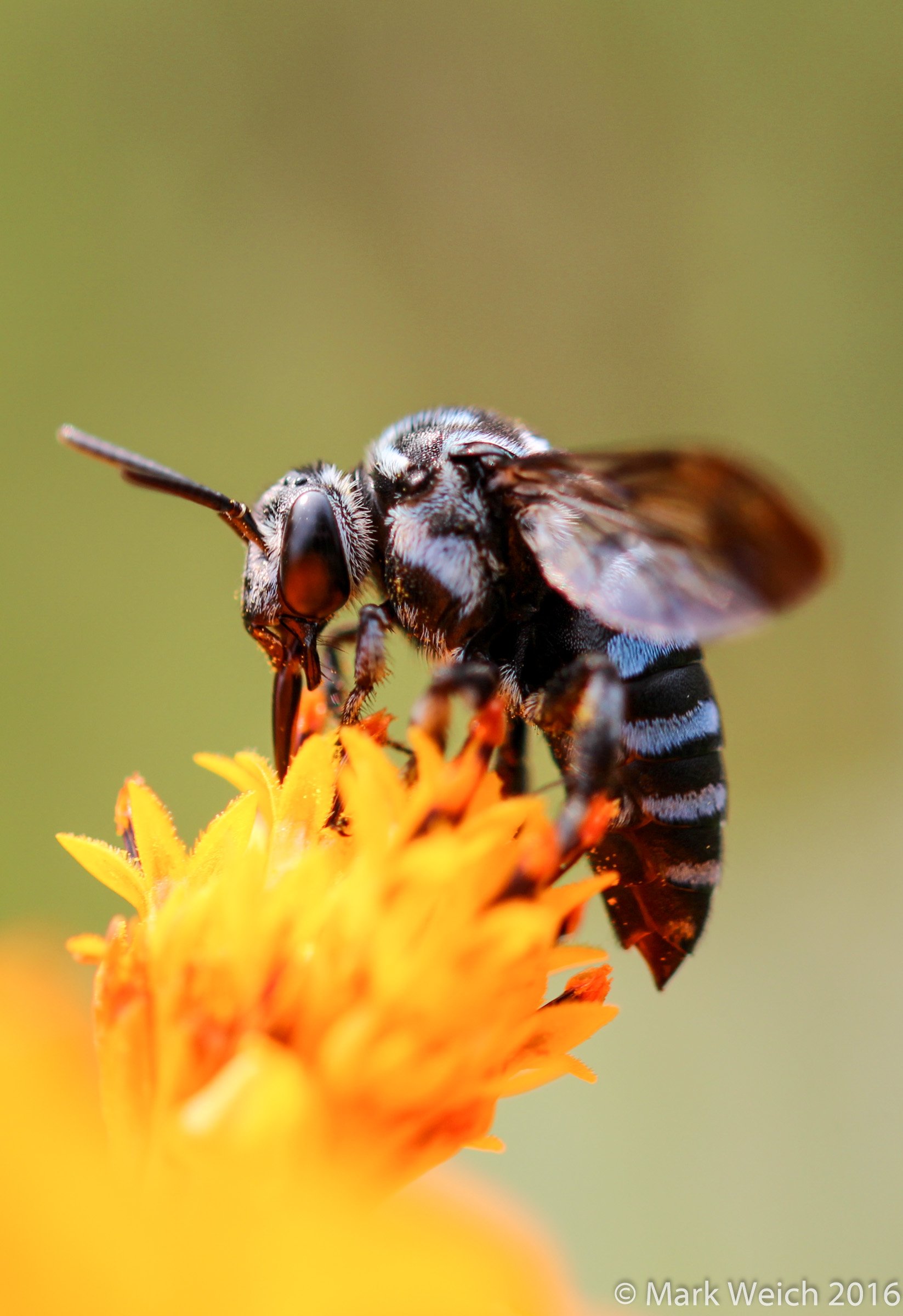
Bees such as this Cuckoo Bee (Thyreus decorus) are quite popular on Steemit and indeed the rest of the world. I really love this Cuckoo bees blue colour! More pictures in a previous post. Not much monstrous about bees other than the sting possessed by many, but not all, bees.
This cuckoo bee is a cleptoparasite, much like the mocking bird, it lays its eggs in the nest of a host species. The cuckoo bee larvae feed on the pollen collected by the host bees. It's also one of the stingless bees.
Different kinds of trickery are also happening in the world of the bees. Droneflies and Hoverflies exploit the fearsome stings, bites and communal defense strategies of bees and wasps by mimicing the appearance of bees. While in fact being completely harmless.
Is this a bee or a fly?
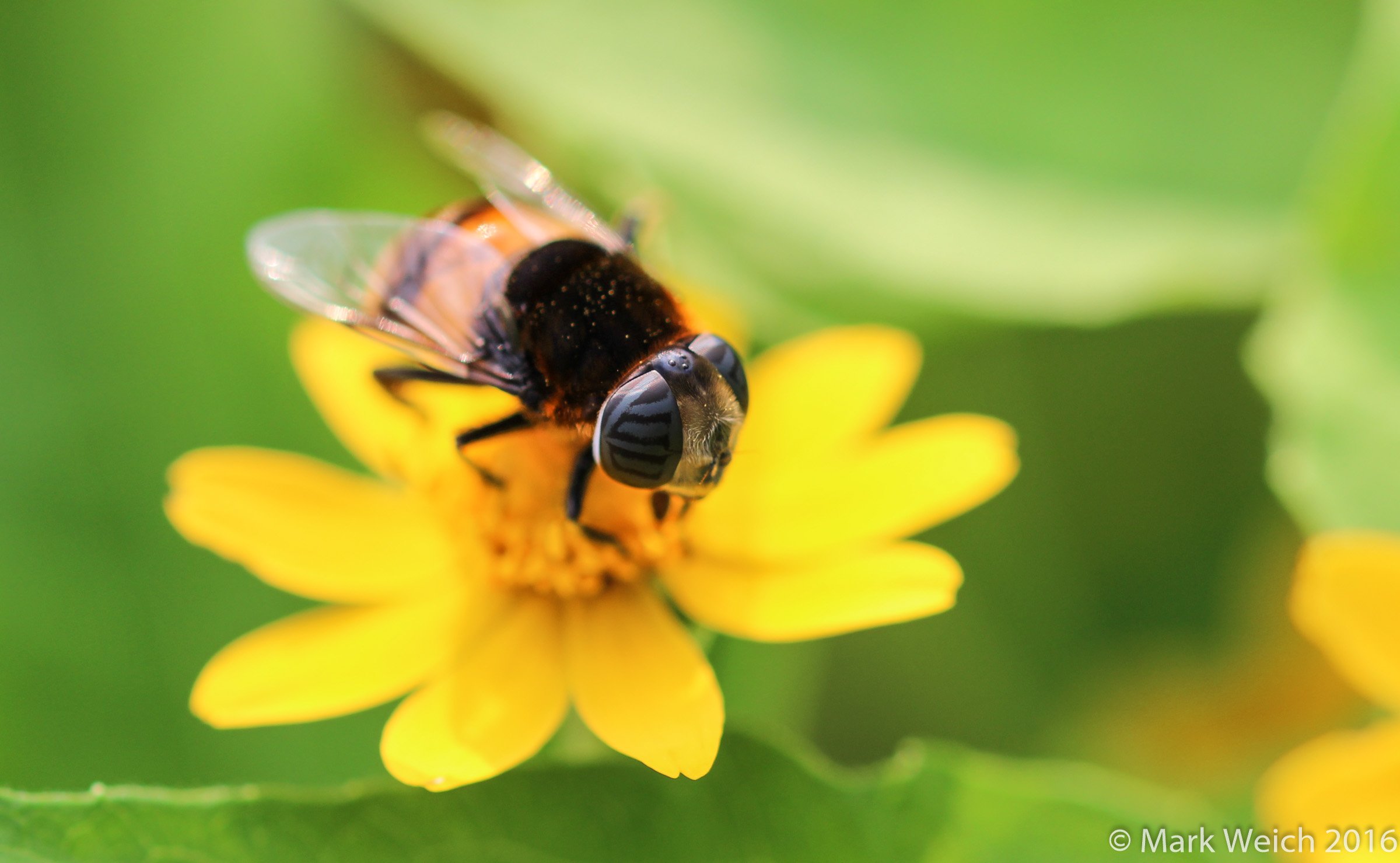
It's a fly! But how can we be sure?
Though it looks very much like a bee, is found in the same places as bees; has similar behaviour, even sounds like a bee, there are some key features we can use to distinguish bee from fly:
Eyes: Bees tend to have eyes that are more to the sides of the head with space between them, whereas in flies the eyes can take up most of the head and are quite close together.
Antenae: The above hoverfly's antenae are very short almost invisible in this picture. Bees on the other hand have very prominent antenae:

Wings: Bees have two pairs of wings, very close together and shaped to function as one but very clearly two wings on each side:
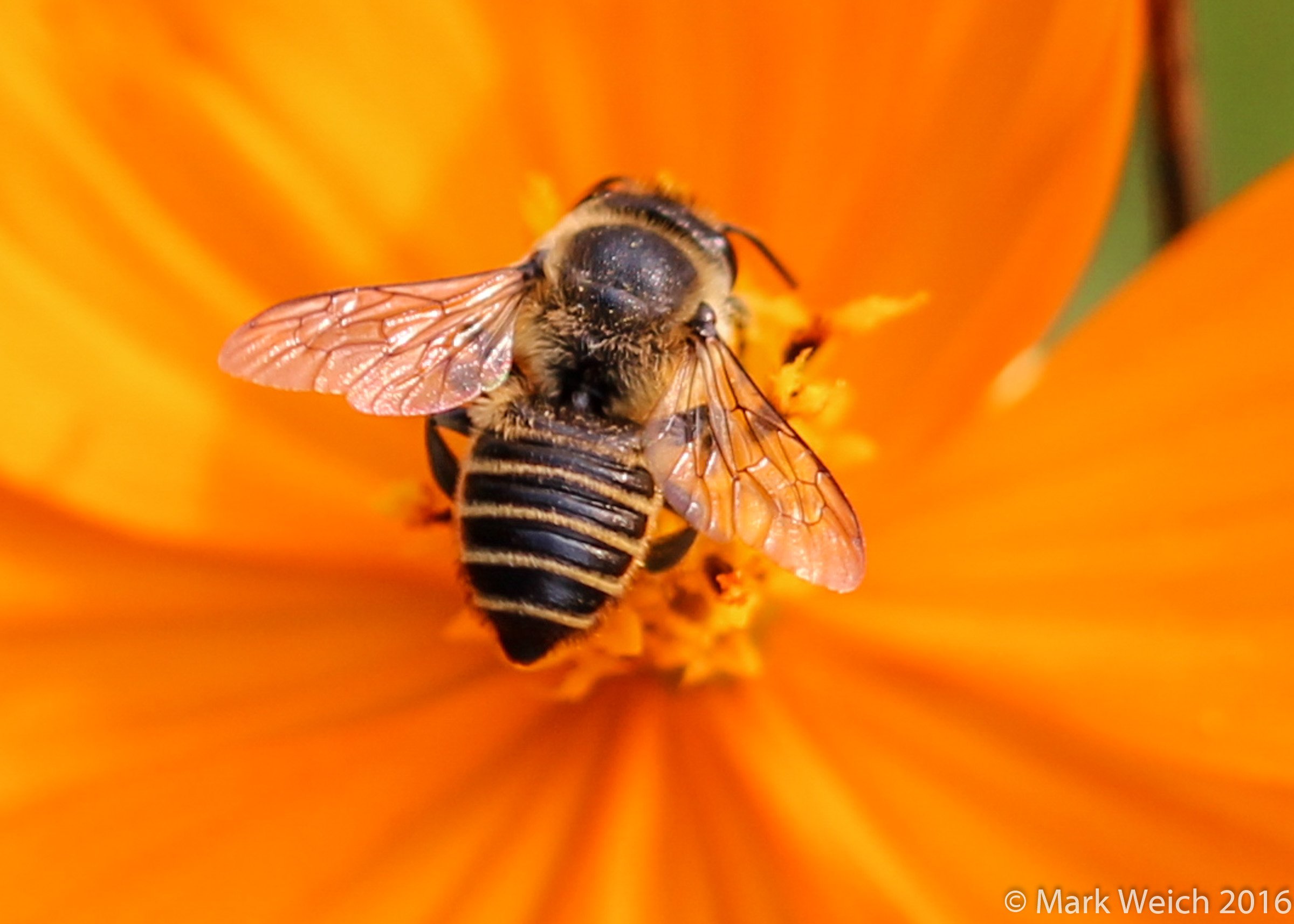
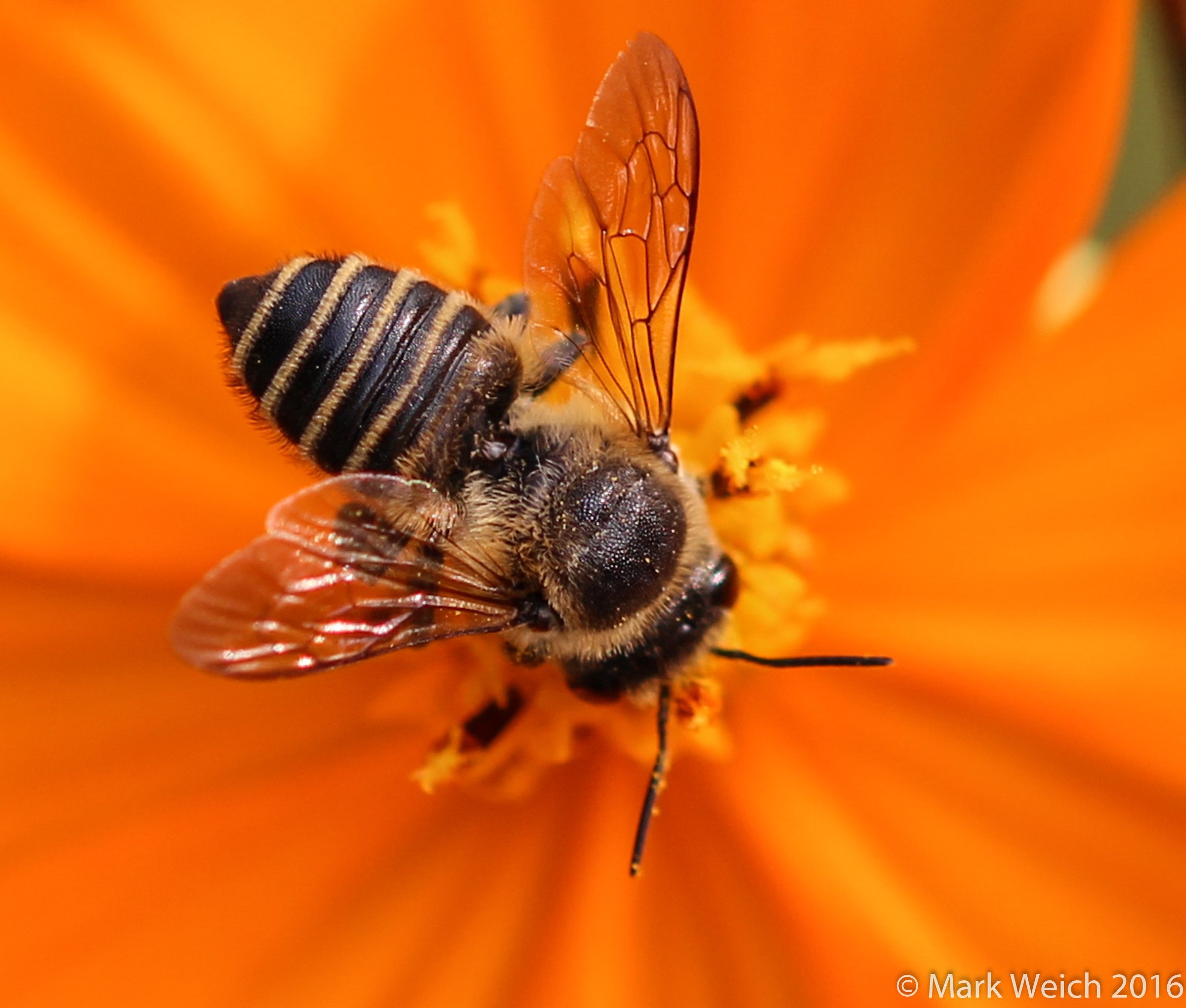
Flies have a single pair of wings:
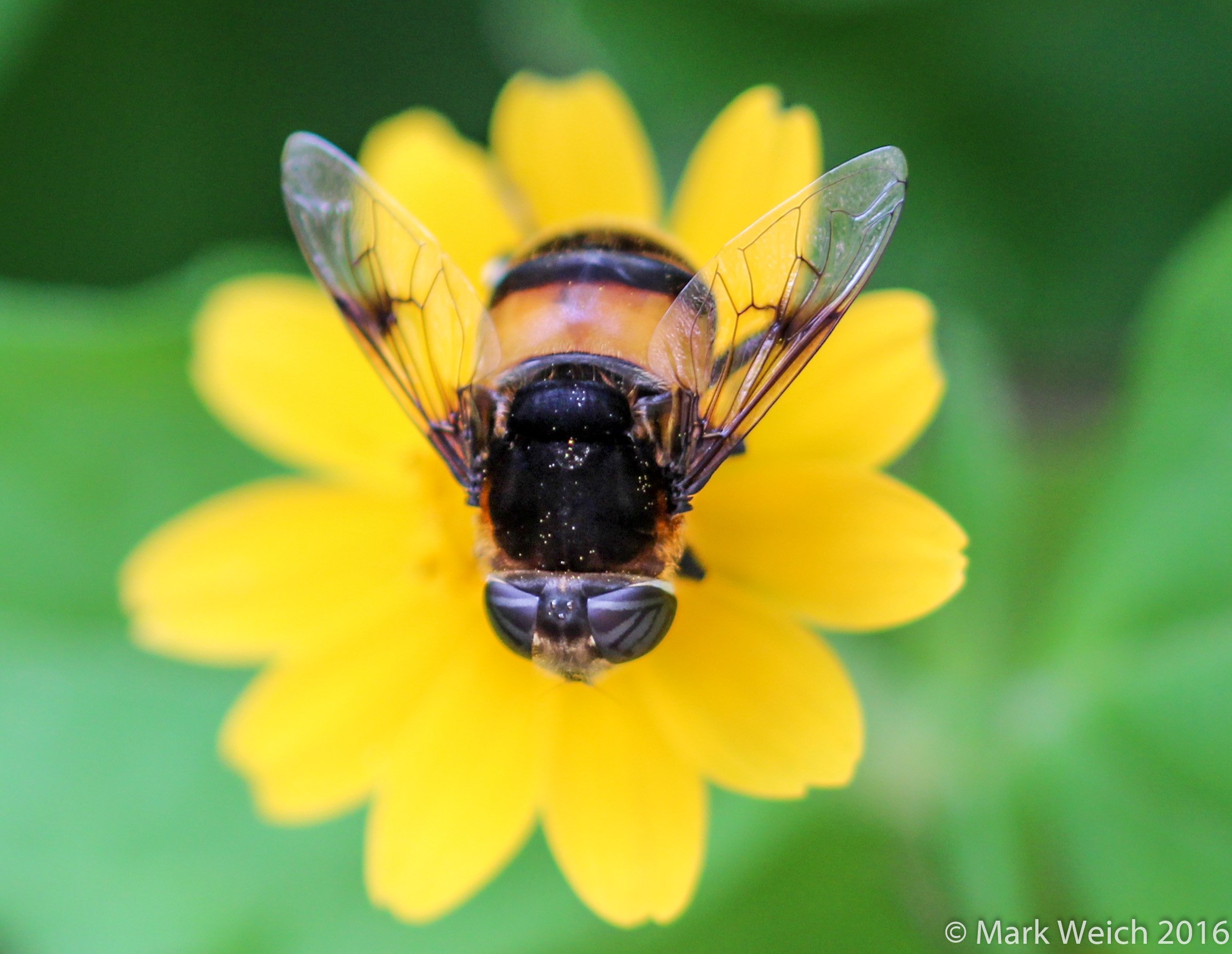
Sometimes it's quite easy to tell a hoverfly from a bee, however there are times when it is very difficult. Which is the entire point of hoverflies looking like bees in the first place!
Bees are invaluable pollenators, they directly impact how much fruit and vegetables are available. Recent deaths of bees due to Colony Collapse syndrome and other causes could have a very real detrimental effect on everyone's quality of life.
Hoverflies are also important pollenators and some species larvae also help with pest control by eating aphids and other plant pests.
Both bees and hoverflies are good for your garden!
Some facts and stats sourced from here: Wikipedia - Hoverflies
I hope you are enjoying these posts as much as I do writing them!
Comments and feedback are always welcome.
Please upvote and follow to see the next installment in your feed!
Reblog if you think your followers would enjoy this post, thanks!
Also, if you like macro photography, check out some of the earlier posts in this series.
Little Monsters - Part I: Wolf Spiders
Little Monsters - Part II: Golden Orb Weaver
Little Monsters - Part III: Lynx Spiders!
Little Monsters - Part IV: Decorator Orb Weaver
Little Monsters - Part V: Black Back Paper Wasp
Little Monsters - Part VI: Dragonfly
Little Monsters - Part VII: Indian Fritallary
Little Monsters - Part VIII: Giant Japanese Hornet
Little Monsters - Part IX: Praying Mantis!
Little Monsters - Part X: Harlequin Ladybird!
Little Monsters - Part XI: Dragons!
Little Monsters - Part XII: Snails!
Little Monsters - Part XIII: Evil Weevils!
Little Monsters - Part XIV: Fantastic Phasmids!
I maintain and reserve copyright on all of my photos.
